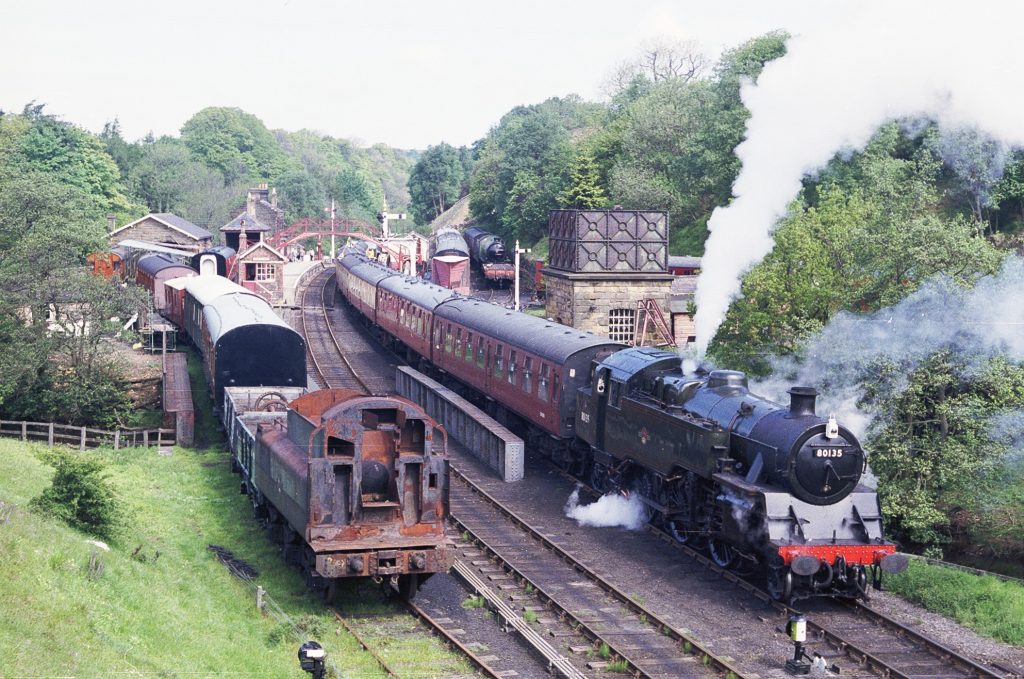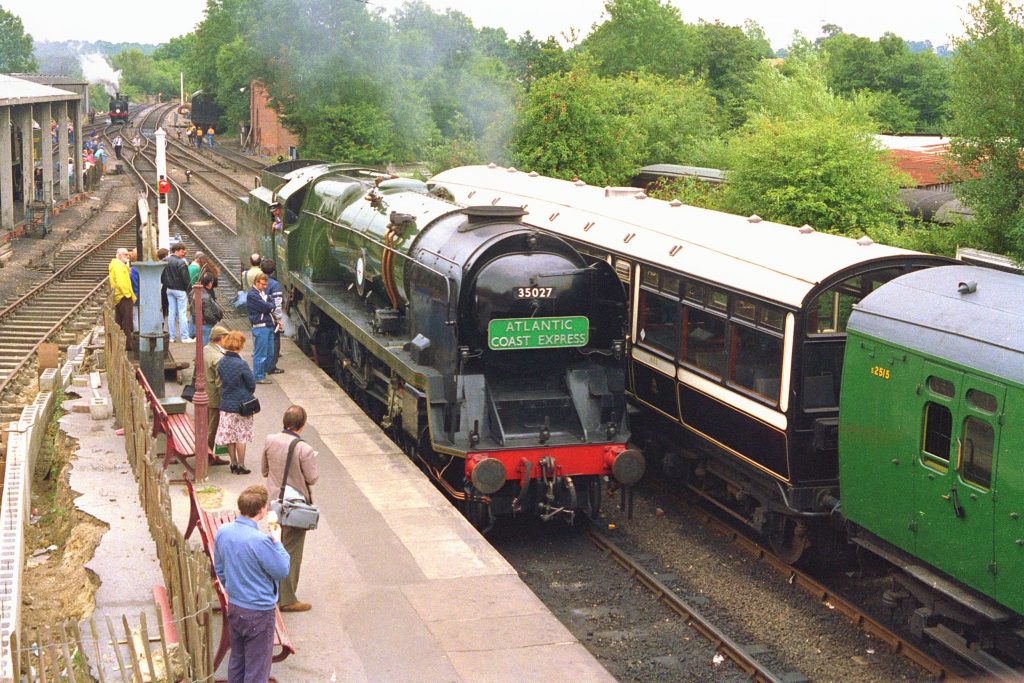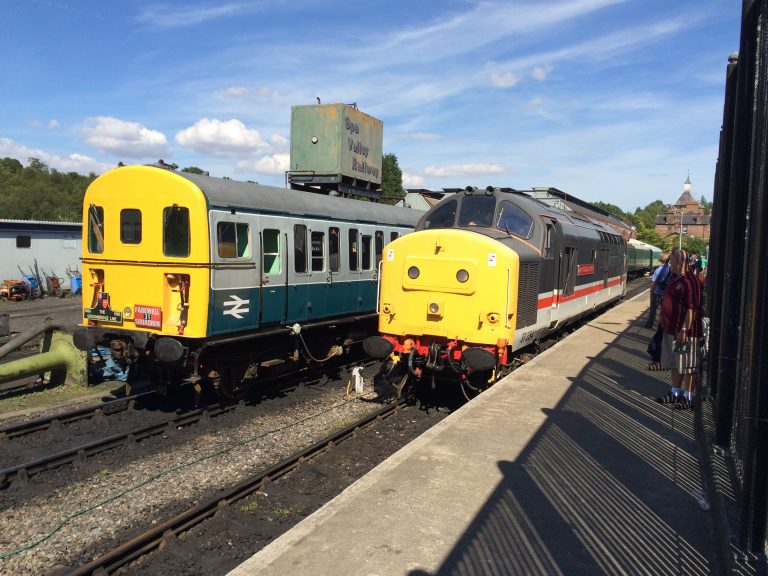In Britain, heritage railways are often railway lines which were run as commercial railways but were no longer needed (or closed down) and were taken over or re-opened by volunteers or non-profit organisations. The large number of heritage railways in the UK is due in part to the closure of many minor lines during the 1960s' Beeching cuts, and they were relatively easy to revive. There are between 100 and 150 heritage railways in the United Kingdom.
A typical British heritage railway will use steam locomotives and original rolling stock to create a period atmosphere, although some are concentrating on diesel and electric traction to re-create the post-steam era. Many run seasonally on partial routes, unconnected to a larger network (or railway), and charge high fares in comparison with transit services; as a result, they focus on the tourist and leisure markets. During the 1990s and 2000s, however, some heritage railways aimed to provide local transportation and extend their running seasons to carry commercial passenger traffic.
The first standard-gauge line to be preserved (not a victim of Beeching) was the Middleton Railway in West Yorkshire; the second, and the first to carry passengers, was the Bluebell Railway in Sussex.
Not-for-profit heritage railways differ in their quantity of service and some lines see traffic only on summer weekends. The more successful, such as the Severn Valley Railway and the North Yorkshire Moors Railway, may have up to five or six steam locomotives and operate a four-train service daily; smaller railways may run daily throughout the summer with only one steam locomotive. The Great Central Railway, the only preserved British main line with a double track, can operate over 50 trains on a busy timetable day.
After the privatisation of main-line railways, the line between not-for-profit heritage railways and for-profit branch lines may be blurred. The Romney, Hythe and Dymchurch Railway is an example of a commercial line run as a heritage operation and to provide local transportation, and the Severn Valley Railway has operated a few goods trains commercially. A number of heritage railway lines are regularly used by commercial freight operators.
Since the Bluebell Railway reopened to traffic in 1960, the definition of private standard gauge railways in the United Kingdom as preserved railways has evolved as the number of projects and their length, operating days and function have changed. The situation is further muddied by large variations in ownership-company structure, rolling stock and other assets.
In the mid 1980’s when I was an apprentice at the local bus company, I had a Staff bus pass that came in very handy as I could get to Pickering using it. So, if I had a day off midweek, I visited the North Yorkshire Moors Railway (NYMR). On one such occasion in 1985 I stumbled across a film crew at Goathland and watched a well-known at the time Manchester based band film a music video.
Over the years I have visited just a small fraction of the lines available, but am very lucky to live close to The Bluebell Railway which I visit regularly and is celebrating its 60th Birthday in 2020.
It is an ambition to visit more lines in the future.


